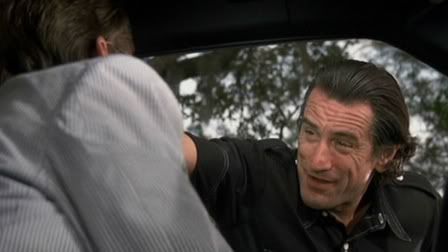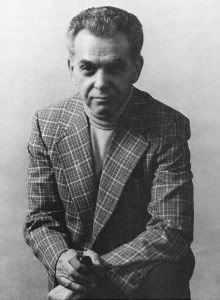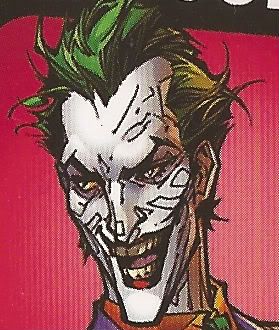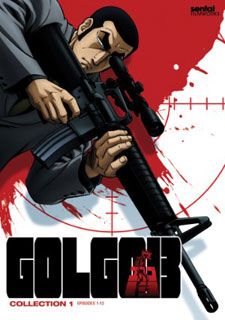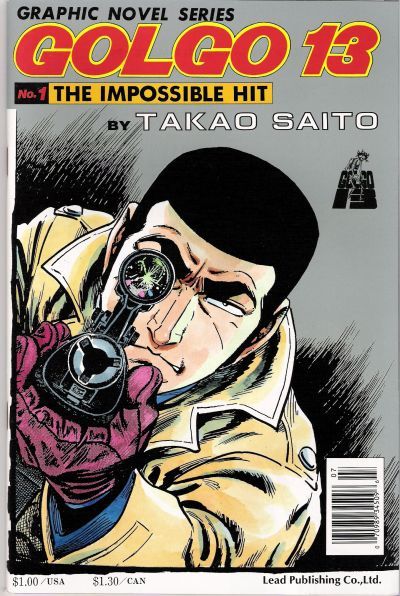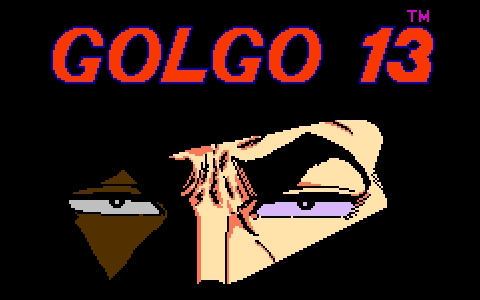Chasing Gentrification
/Nothing has really inspired me to want to write comics reviews the last couple of weeks, and it's really appalling for me to not have content for my own blog, so I want to write a bit about my neighborhood. This isn't, in any kind of direct way, about comics; and it's only really loosely about "retailing" like I categorized it, so maybe you won't care about any of this, and I'm going to put the rest below the jump....
I also think this is going to be a good deal more rambly than usual, for what that's worth -- I haven't outlined it or anything, but I've wanted to make a post about this for the last few months. See, a Chase bank recently moved in, displacing a number of small retail businesses.
Well, maybe I need to start somewhere way earlier than that.
(you might want to go open google maps and street view and look around the block, maybe, to make this easier to follow along? Maybe not, I don't know)
(Oh, and to start the earliest note here, Comix Experience has been in the same location since the day we opened, April 1, 1989 -- 23 years ago this writing)
So, the commercial corridor I'm on is Divisadero St., which, essentially, runs from Haight St (where Divisadero makes a small turn and becomes Castro st.), all the way down to Sacramento St., basically a 20 block stretch. Now, the Divisadero Merchant's association says that the neighborhood actually is Haight to Geary (14 blocks), but that seems unfair to the UCSF-side retailers.
The bottom end of this corridor, Haight, puts us between two neighborhoods -- the "Upper Haight" is like where Haight/Ashbury and all of the Hippie shit is/was, and there's a separate commercial corridor up there, six blocks on Haight from Central to Stanyan. At this point, the "Upper Haight" is nearly exclusively "hip" clothing shops, restaurants, and Head Shops. And lots of street kids.
There's also the "Lower Haight" which is pretty much Scott to Webster (five blocks), but except right there at Haight and Fillmore, I'd say is not a "bustling" shopping street.
So, if you're looking at the map, I guess you can see that Divisadero is really between two neighborhoods, and part of neither? There's also the notion that Divis is a major transportation through-street, being 4 lanes wide.
OK, so down at the bottom end of the commercial bits Divis, the first block is kind of strangely zoned/used -- the eastern side of the street is all shops (Head Shop, cafe, pizza, boutique clothing, flower shop, sandwich shop, copy shop, yoga studio, mexican restaurant, bar), but the western side really only has a single store front, which once upon a time was a magic/occult store (we still get people asking "where'd they go?!?!" a decade later!), and right now is empty. There's a church on the western side of the first block, and a space that's zoned commercial, but has never been used, and down on the Page side corner the little convenience store, but if you're walking on that side of the street, your brain isn't saying "stores!"
On MY block, from Page to Oak most of the "stores" are on the West side, with the East side being a lot less so (they run: Hair Salon, Thai restaurant, dry cleaner, orthopedic supply, pet food, gym, paint store) -- on my side, it's produce store, ME, upscale pizza, hotel, yoga, facial place, consignment store, game store, used cooking supply shop, boutique clothing, dry cleaner, cafe. Frankly, I think that Gamescape and I anchor the block, but I would think that, wouldn't I?
The next block along (Oak to Fell) is utter retail wasteland. Right now, it's three gas stations and now a Chase bank. Oak and Fell are the major east-west traffic paths to/from downtown and 101 -- each are one way streets with four lanes each (one goes east, the other west), hence the THREE gas stations! These are relatively safe, traffic-light intersections, but they carry a ton of east-west traffic, and, from my POV put a pretty big barrier for making Divis a truly good retail walking street.
On the other side of Fell, retail thickens back up again, but, up until a few years ago, this wasn't exactly a stretch of street that was too exciting -- for a good long time the Popeye Chicken's (the only other chain on the entire Divis strip) was the most commercial element of that section. That side of the neighborhood was heavily urban black, with a ton of government housing.
But, of course, with housing being scarce in San Francisco (we've never built the kind of dense rental housing towers that you'll see in a New York or a Chicago), and Silicon Valley minting millionaire after millionaire, of course here comes the gentrification.
It's been moving in that direction a good long time, of course, but I think it really solidified when NOPA opened in 2006 -- a really delicious, pretty upscale restaurant. "NoPa" means "North of the Panhandle", though, if you look at a map, they really are much more "East" (2 east, 1 north), but "EoPa" doesn't sound very good.
(The "panhandle" is that eight block bit that juts off from Golden Gate Park, that's totally obvious when you look at a map)
NOPA, the restaurant, was successful enough that real estate agents, those paragons of fair naming, renamed the entire neighborhood "NoPa", which is how people refer to it today, though old timers like I just kind of giggle at the idea. BUT, the neighborhood really is kind of actively not urban and black like it was when I opened in '89. In fact, "Old Man Joe" (I never knew his last name), who used to hang out on the corner of Page street with his buddies, drinking beer and just generally watching over the neighborhood, died last week. I was pretty genuinely bummed when I heard. He was an awesome old guy.
So, the "NoPa-ization" (which, like I noted, really WAS in motion before NOPA moved in, but it's a convenient marker) of this neighborhood has also gotten a number of the landlords to think greedy thoughts. For example, we used to have a great vinyl record store across the street -- Open Mind Music -- who got booted when the landlord raised the rent way way up. Now Black Nose (A pet food place) is in the space, and while I hope they are doing enough business, we don't get the kind of crossover walking traffic from them that we used to from the Comics/Game store/Record store trifecta, that's for sure. Plus, we used to also have a medical marijuana place (it's now the gym) that I don't think hurt business at all.
Maybe the most visible examples of "landlord greed" was the NW corner of Oak and Divis which is now where a Chase is. The space they're in used to be three separate retail store fronts -- a Cheese Shop which had been there for, like, ever, and a coffee/truffle joint that never actually really looked like a viable business to me, but they were paying the rent I guess. There was also a corner space that used to be the dry cleaners that moved onto our block, after they had their rent raised to the ceiling.
The corner space then sat open for at least two years... maybe it was 3 or 4? God, it was an ugly blight on the neighborhood, but the landlord wanted more rent than anyone other than a chain was willing to pay.
For a couple of weeks it looked as though a "Batteries plus" would go in -- a store that sells nothing but batteries... and my god doesn't that sound a lot like the Saturday Night Live sketch about the mall store that sells nothing but scotch tape? But I guess a few people in the neighborhood complained (SF *is* NIMBY-ville), and the franchise-ee got cold feet and pulled out, leaving the blight for another year, and then finally Chase bank wanted the space.
Except, in order for Chase to make it a bank, out had to go the cheese shop and the truffle place. Too bad, so sad!
(Plus, understand, we have a Bank of America a block away, and a Wells Fargo ATM station right there as well, so it isn't like there's a paucity of banking options...)
See, the thing for me is that I'm not exactly sure what the thinking might be to enter into (what I imagine must be) a long-term lease for a physical banking space when it would certainly appear that more and more people are shifting to online banking... and when you have TWO other Chase branches within a half mile -- one is nine blocks away, the other is 10 -- well, it makes way way even less sense to me.
When Chase went in, there was a brief "Occupy" set of protests there, but it never really amounted to anything -- just a day or two of 2-3 cats standing on the street with signs.
Here's the thing, though, I think that the neighborhood kind of HAS responded, because whenever I walk by the branch, I never ever ever see any customers in there. Ever. All I see is 3-4 tellers milling about, talking to one another. Meanwhile, I go to the BofA around the corner at almost anytime, and there are people waiting in line there.
I've seen people in Chase's ATM foyer thingy, but not once in the bank itself. I'm fairly certain that someone MUST be going in eventually, but never in any hour that I've personally witnessed -- I walk past 3-4 times a week, maybe? Now, I don't know how commercial banks rate the viability of what they do, but, from my point of view as a retailer, they've got to be losing thousands of dollars a month in that location as it looks like very few people are using it.
So, this is what kills me: not only did Chase help to hurt the neighborhood by evicting (even if THEY didn't Do the Deed) two local businesses, and the potential for a third (if the landlord wasn't unreasonable), but they did it on a block that NEEDED retail in order to connect OUR block to the rest of "NoPa" -- now we've got this block long no man's land there where at least we had a trickle of people shopping at cheese and truffles.
Seriously, though, walk-by is the lifeblood of any retail business, and we need to be encouraging retail that brings more walk-by for everyone. I'm dreading what's going to go in at the old magic store, kinda... because I'm suspecting that Swankety Swank disappeared they way they did because the Rent Was too Damn High.
I don't mind if the neighborhood is, y'know, safe to walk at night (well, relatively... there's been a rash of grab-and-dash celphone robberies going on in the hood), but I fear that gentrification will eventually boot me out, as well. I have what I think is a very good relationship with my landlord, but with commercial space, at any moment I could have my rent tripled or just be flat out booted out, and there would be very little I could do about it. We're successful, yes, but mostly because the rent is affordable -- if I have to pay "NoPa" rents, I'm going to be in trouble, because there simply isn't enough daytime walk-by to justify THAT kind of expense.
And, y'know, I deeply miss the Church of Saint John Coltrane that used to be on our block, and were the first victims, I think, of being rent-increased out off the block. (They used to be at 351 Divisadero)
At the end of the day, I think neighborhoods depend on neighborhood businesses to give them character -- I despair when I go out of SF and hit one mini-mall after another, going from chain formula retailer to chain formula retailer. How gross! Do you guys even know what it is you've lost in most of this country? And, in San Francisco specifically, I worry deeply about the loss of the working class -- home prices in my neighborhood have gone up like 200% in the last 12 years, which is nice for my equity, I suppose, but not good for people trying to live here without tech stock options.
I worry about these things.
Anyway, thanks for reading this far!
-B



